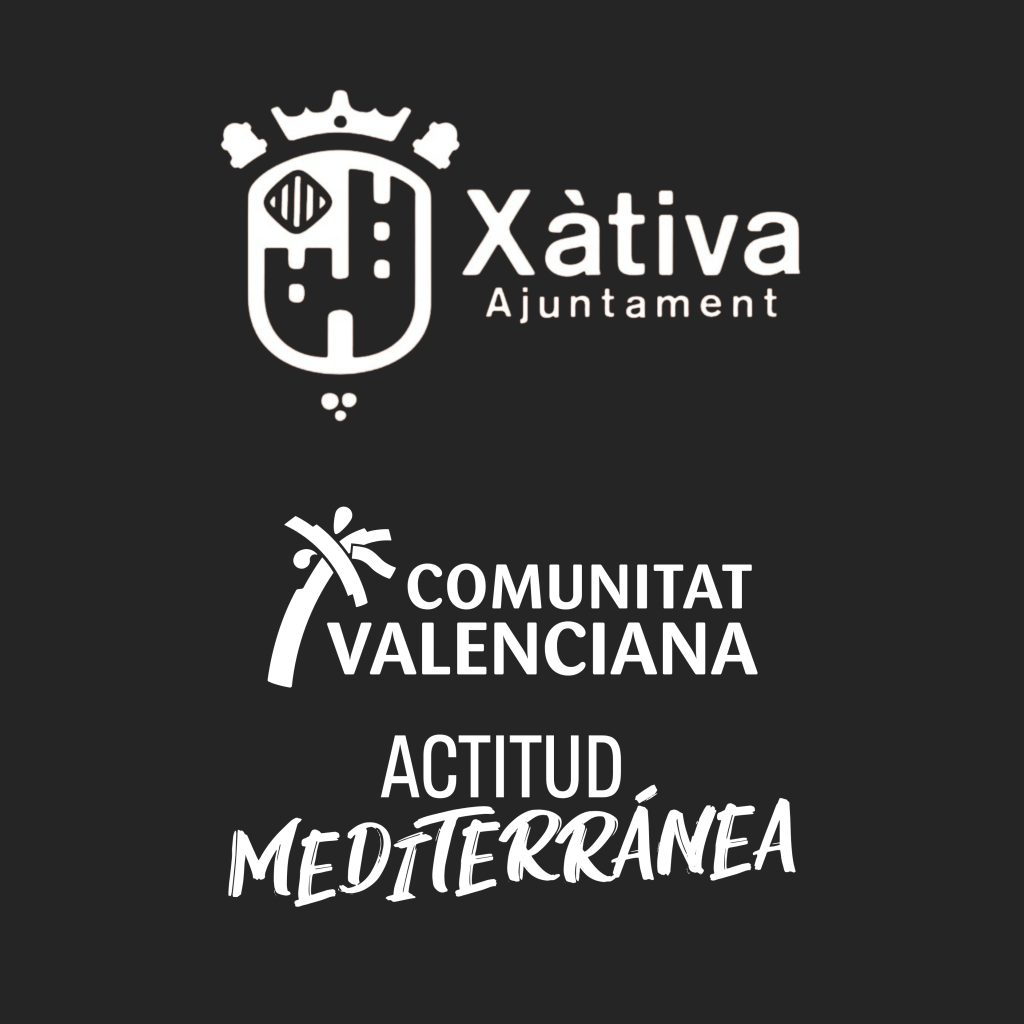Corpus Christi
Age-old cultural heritage
Corpus Christi
Age-old cultural heritage
All residents of this city take note […] on the occasion of the upcoming feast of Corpus Christi which is to be held tomorrow, all the inhabitants living along the route of the procession must ensure that the streets are clean and all balconies and windows have drapes and so forth corresponding to so solemn a function […].
Municipal decree, 1753
Reviving the original splendour
The Corpus Christi procession takes place in June. This solemn but colourful event features many elements of local culture, often involving a unique dance. Since its inception, the procession has combined secular with religious features.
Mentioned in records dating back to the 14th century, the Xàtiva procession has one of the longest histories in the Region of Valencia. Revival of this custom began in the 1980s, in an endeavour that has led to its current splendour. These days, school students rehearse for weeks to perform a multitude of dances. On the religious front, numerous characters from the Bible march in the procession, representing biblical scenes. Another major element is the enramada, in which local residents scatter herbs onto the streets in advance of the procession, creating an aromatic green carpet for the occasion.
The Moma, virtue’s struggle against sin
Countless religious scenes and dances are performed during the Corpus procession, the most characteristic of which is unquestionably the highly symbolic Moma, considered the most ancient of the spectacles. The Moma, dressed in white and the central figure of the dance, embodies virtue, while the momos, dressed in red and black, represent the cardinal sins. To the accompaniment of a simple melody played on a drum (the tabal) and a traditional woodwind instrument (the dolçaina), the dancers re-enact virtue’s struggle against sin.
Other notable dances include those of the Gegants, associated from the earliest times with the Corpus, the Nanos, the Paloteig, derived from the archaic stick dance (ball de bastons), the Magrana, a dance only performed in Corpus Christi processions in Valencia, the Arquets, the Cavallets, biblical characters and many more.
Unique music
Another outstanding feature of the Corpus celebration is the exceptional wealth of music that accompanies the dances and theatrical performances. Most of the pieces, such as the music accompanying the dance of the Moma, are age-old tunes played on a tabal and a dolçaina, traditional instruments in local Valencian culture.
Involvement and participation
People have always flocked to participate in both the secular and religious Corpus Christi celebrations. Following revival of the feast, Xàtiva’s schools and the city’s School of Dance have played a very active role, with their students performing a variety of dances following painstaking rehearsals.
The fusion of local and religious culture
Since its origins in the 14th century, the Corpus Christi feast has fallen on dates that coincide with earlier secular celebrations, ancient rituals linked to the agricultural year. Christianity’s assimilation of these celebrations explains the fusion of local and religious culture in the feast of Corpus Christi in Xàtiva and elsewhere. Dances such as the Moma, and the various performances of biblical ‘mysteries’, form the heritage of the Church’s moral teaching at the dawn of the Early Modern Period.
WHERE TO SEE THE DANCES
- Plaça de la Seu
- Calle de la Corretgeria (junction with the Calle Roca)
- Plaça de Santa Tecla (centre)
- Calle del Taquígraf Martí (on the corner by the Church of Mercè)
- Plaça de Sant Jaume (centre)
- Plaça de la Bassa (end of the Calle Hostals)
- Plaça de la Bassa (start of the Calle Francesc)
- Porta de Sant Francesc (next to the Baroque fountain)
- Montcada Street (opposite Dominiques)
- Portal del Lleó (junction with Montcada)
- Plaque de la Trinitat (beside the Gothic fountain)
- Calle de l’Àngel (junction with the Calle Barranc)
- Portal de Vàlencia (opposite the Church of Consolació)
- Plaça de Benlloch (junction with the Calle Sant Pere)
- Plaça de Sant Pere (opposite the bakery)
- Calle de Segurana (junction with the Calle Sant Cristòfol)
- Plaça d’Enríquez (junction with the Calle Sant Vicent)
- Plaça de l’Abat Pla (opposite the back door into the la Seu)
- Plaça de la Seu (centre)



